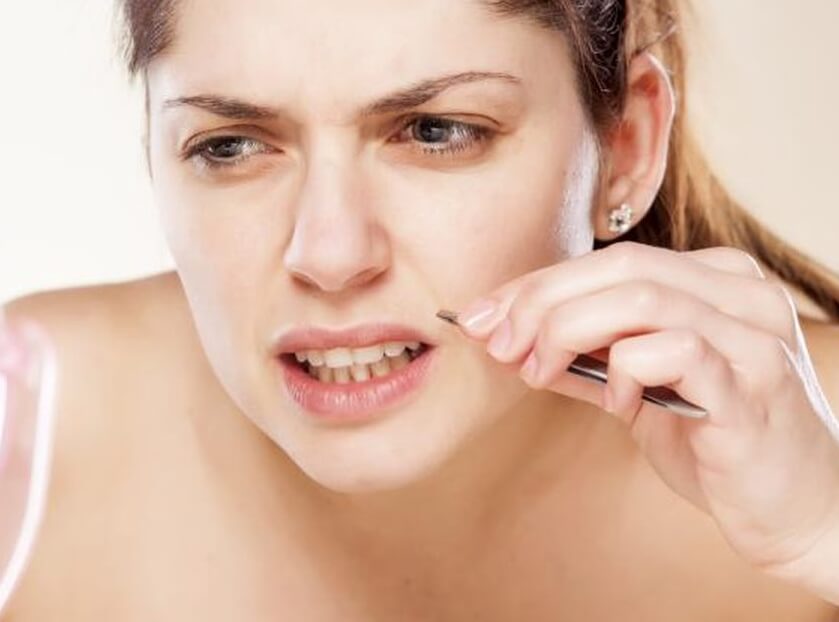Reading Time: 6 minutes
The hair removal industry has become quite profitable, with a market value of $880.2 million as of 2017. Moreover, it is projected to reach $ 1.35 billion by 2022, says Mariela, in a report for Different Truths.
For most women, the absence or reduced appearance of hair has become an indicator of beautiful, flawless skin. This may be one reason why the hair removal industry has become quite profitable, with a market value of $880.2 million as of 2017. Moreover, it is projected to reach $ 1.35 billion by 2022.
But beyond the statistics, what makes this industry prosperous is the consumers’ seemingly unending search for a way to achieve smooth and flawless skin.
But beyond the statistics, what makes this industry prosperous is the consumers’ seemingly unending search for a way to achieve smooth and flawless skin. Interestingly, some people are unaware that everyone has facial hair, even if they don’t appear to. This is because these hairs are usually very small, fine, and lighter in colour and thus are not always immediately visible.
While most people refer to these fine hairs as “peach fuzz,” beauty care experts have another term for it: vellus hair. Medically, these hairs are present to help the human body regulate its temperature – much like fur does for animals.
To help you understand this further, discussed below are the possible causes of facial hair growth among women and what you can do to achieve permanent hair removal for the face.
Three Causes of Excessive Facial Hair Growth in Women
Although facial hair growth is normally present regardless of gender, there are some instances wherein women get more hair on their face than they should. Generally, excessive hair growth occurs when a woman has higher levels of androgen hormones than usual.
Androgen is often referred to as the male hormone, but it is present in both men and women. The only difference is that women have lower levels of this particular biochemical.
Androgen is often referred to as the male hormone, but it is present in both men and women. The only difference is that women have lower levels of this particular biochemical.
Excess growth of hair in parts of a woman’s face and body is often caused by hirsutism. While hair does grow in your body no matter what your gender, women typically have finer and lighter-hued hair than men. However, what separates hirsutism from the normal peach fuzz women get is the hair’s colour and texture.
However, what separates hirsutism from the normal peach fuzz women get is the hair’s colour and texture.
Excessive hair growth from hirsutism that appears in the face, back, arms, or chest have a coarse texture. It is also often dark-colored and, thus, more noticeable compared to peach fuzz.
This abnormal hair growth pattern in women is often linked to virilisation due to an imbalance of sex hormones. In particular, women with hirsutism tend to have higher levels of male hormones, which explains why they show male characteristics.
Women with hirsutism tend to have higher levels of male hormones, which explains why they show male characteristics.
These atypical circumstances are caused by certain medical conditions, including:
-
Polycystic Ovarian Syndrome (PCOS)
Polycystic ovarian syndrome (PCOS) is a condition that causes most hirsutism cases (around 72 to 82 percent), based on a 2012 research published in the American Family Physician health journal.
Because PCOS causes hormonal imbalance, some signs that you may have this condition include decreased fertility and irregular menstruation.
Women with this condition have benign cysts in their ovaries. Because PCOS causes hormonal imbalance, some signs that you may have this condition include decreased fertility and irregular menstruation. In some cases, women with this condition may also become overweight and experience moderate to severe cases of acne.
Other symptoms you should look out for are:
-
Mood swings
-
Fatigue

PC: youtube -
Inability to get pregnant
-
Pain along the pelvic area
-
Chronic headaches
-
Sleep problems
-
Thyroid Disorders
Since the thyroid gland is responsible for regulating body temperature and metabolism, irregularities in its function can also affect hormone production.
Since the thyroid gland is responsible for regulating body temperature and metabolism, irregularities in its function can also affect hormone production. And where there’s an irregularity in hormone production, excess growth of unwanted hair is bound to occur as well.
-
Adrenal Gland Disorders
Sitting just above the kidneys are the adrenal glands which work to regulate the production of hormones.
Among the common disorders of the adrenal gland that causes an imbalance of hormones and lead to excessive hair growth are:
-
Adrenal cancer
-
Tumors
-
Cushing’s disease
-
Congenital adrenal hyperplasia
Although it is rare, congenital adrenal hyperplasia is considered as a major cause of hirsutism in women.
Although it is rare, congenital adrenal hyperplasia is considered as a major cause of hirsutism in women. People with this type of condition have adrenal glands that produce too many androgens, mainly because they are born without an enzyme that aids in hormone production.
Meanwhile, people with Cushing’s disease experience extended exposure to and higher levels of the stress hormone cortisol. This may be due to the use of corticosteroids.
Women with this condition experience excessive facial hair growth and irregular menstrual cycles.
Women with this condition experience excessive facial hair growth and irregular menstrual cycles. They may also have purple stretch marks, fatty lumps in between their shoulders, and a rounded face.
Androgen-secreting tumors, on the other hand, can be found in the adrenal glands or the ovaries. This condition is very rare and accounts for only 0.2 percent of all hirsutism cases. The unwanted hair that emerges from the presence of these types of tumors often appears suddenly. They also tend to continue growing even while you undergo medical treatment.
Androgen-secreting tumors, on the other hand, can be found in the adrenal glands or the ovaries. This condition is very rare and accounts for only 0.2 percent of all hirsutism cases.
When you have an androgen-secreting tumor, you are also likely to experience the following symptoms:
-
High levels of testosterone
-
Increased muscle mass
-
Abdominal or pelvic mass
-
Deepening of voice
-
Male-pattern baldness
-
Enlarged clitoris
-
Boosted sex drive
Aside from these medical conditions, women may also experience thicker facial hair when taking medications that alter hormone levels. This includes antidepressants, sleeping medications, estrogen and testosterone supplements, and some antibiotics.
Three Hair Removal Methods You Can Try
There’s virtually nothing you can do to stop those hairs from growing on your chin and other parts of your face. However, you have many options in terms of hair removal.
If the excess hair is bothersome for you, you can try one or more of these three hair removal methods:
-
Plucking and Shaving
These hair removal techniques can be done by a professional or by yourself. Plucking and shaving hairs tend to serve as quick solutions. However, the results of these strategies doesn’t last long.
Shaving tends to cause ingrown hairs, particularly along the pubic region. Plucking, on the other hand, can be painful and should only be done when only a few hairs need to be removed

Also, shaving tends to cause ingrown hairs, particularly along the pubic region. Plucking, on the other hand, can be painful and should only be done when only a few hairs need to be removed as it might cause scarring and ingrown hair in larger areas.
-
Depilatory Creams
These are hair removal creams that can be bought over the counter without any prescription. Not all depilatory products are the same, so make sure that you read the labels first before buying.
Depilatory creams contain chemicals that help remove hair by dissolving the hair shaft. When used for too long, they might cause burns. They may also lead to allergic reactions
Depilatory creams contain chemicals that help remove hair by dissolving the hair shaft. When used for too long, they might cause burns. They may also lead to allergic reactions and may not be suitable for use in all parts of the body with unwanted hair.
-

PC: beautytipadvisor.com Electrolysis
Often mistaken as another form of laser treatment, electrolysis is done by introducing an electric current to the hair follicles through a small instrument. This method of hair removal comes in different forms, all effective if performed by a qualified professional: thermolysis, blend and galvanic.
Thermolysis electrolysis utilises heat to destroy the hair follicles. Meanwhile, galvanic electrolysis chemically removes them. Blend is a combination of them both used for ingrown hairs.
Thermolysis electrolysis utilises heat to destroy the hair follicles. Meanwhile, galvanic electrolysis chemically removes them. Blend is a combination of them both used for ingrown hairs. There are electrolysis hair removal videos that can help you learn more about the procedure.
Understanding the Human Body
Knowing how the body works can help us understand why some things occur even though they don’t usually do in other people. For unwanted body hair, it is crucial that you learn why it appears so you can deal with it safely and effectively.
Photos from the Internet















